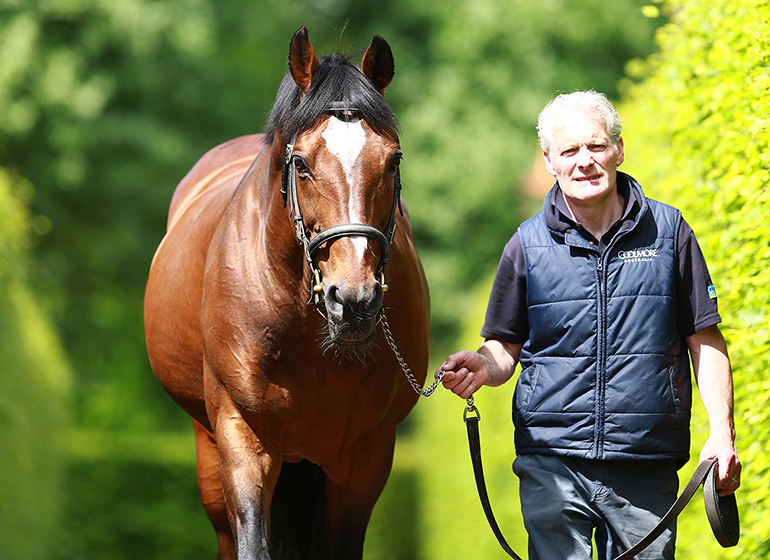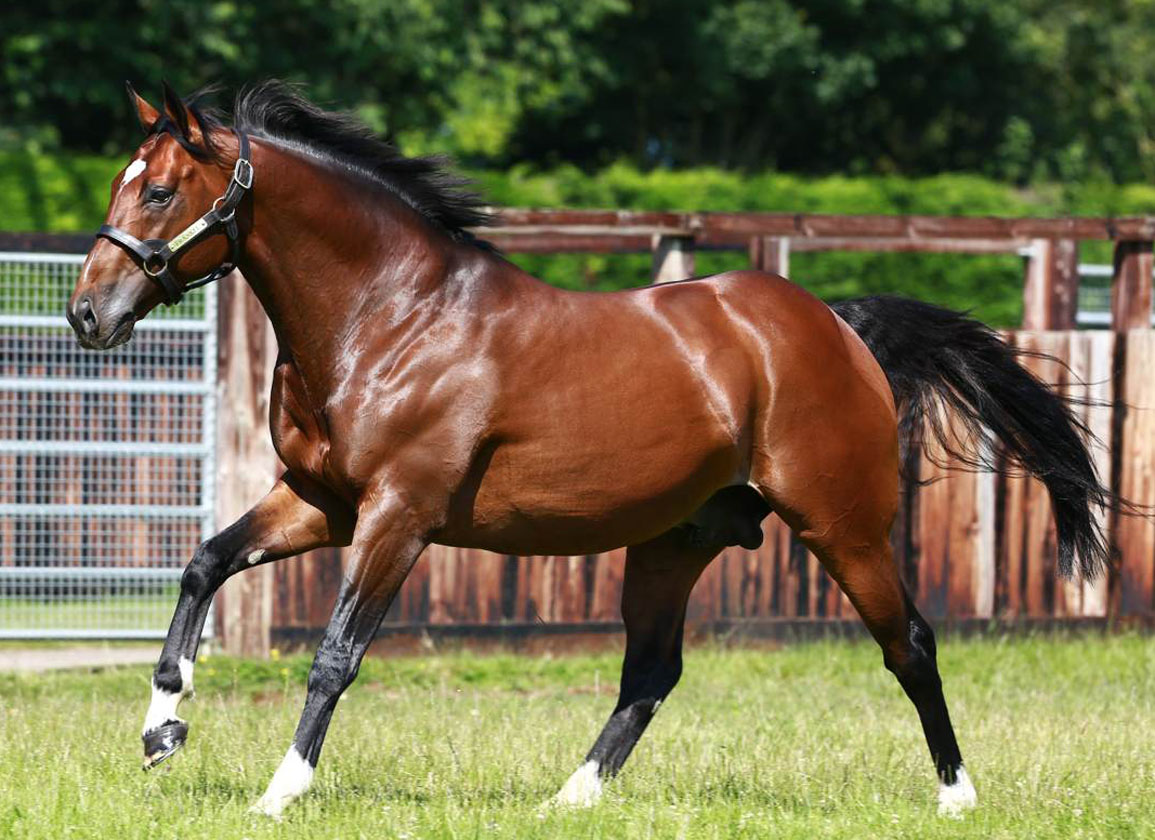The bit that most concerns us, naturally, is that the race is not to the swift–albeit ours is a business that will also disclose, fairly reliably, that nor is the battle to the strong; bread to the wise; riches to men of understanding; or favor to those of skill. “Time and chance happen to them all.”
So, yes, we all know that before anything else we require a little luck. But the whole point of Epsom, as the definitive measure of the Thoroughbred, is that while your horse must certainly be swift and strong, he also requires agility and, above all, endurance. And that latter element certainly sets the tone for the 243rd running of what remains, with all due respect to the even older St Leger, the most venerable horserace on the planet.
Because on Saturday, by some poignant alignment of the stars, the Derby will have a far broader reach than has lately been the case in Britain, thanks to two single spans of human life that have indelibly shaped even an institution that has doughtily survived empires, wars and, of course, plagues.
The race is being run in memory of Lester Piggott, the only jockey to win it nine times, whose epic tale drew to a close last Sunday. And it will also be a centerpiece of a four-day national holiday for the unprecedented 70th anniversary of the Queen's accession to the throne.
For a long time, the monarch had hoped to insist that one perennial ritual would retain its place in the Jubilee pageant, but even her indefatigability has its limits, at 96, and she has reluctantly accepted that she will not make it to the royal box at Epsom. Until last year, when social distancing intervened, she had missed only three Derbies since the Second World War.
Though she has won the other four Classics, she has never got closer to the Derby itself than immediately after her coronation, when Pinza had the effrontery to deny the young Queen's runner by four lengths. But that does not alter the fact that her passion for the Thoroughbred, and its proud English heritage, has proved a priceless boon to the sport through a reign that has measured a profound demographic alienation from to its roots in rural life.
The year after Pinza beat Aureole, the teenaged Piggott made his precocious Epsom breakthrough on Never Say Die, who had started life on Jonabell Farm and so became the first Kentucky-foaled Derby winner. Never Say Die! An apt enough maxim, for a man who would serve a prison sentence before coming out of retirement at 54 and winning the GI Breeders' Cup Mile 10 days later. That was such an outlandish tale that we tend to overlook what a last-ditch gamble was Royal Academy, as a yearling, for a trainer with whom Piggott had shared four Derbies in their mutual heyday–all with North American-breds.
In Vincent O'Brien no less than Piggott, then, we see how competitive longevity discloses an element of stubbornness, nearly of obduracy, as the vital spark of all achievement. And we also see it in Frankie Dettori, the only jockey since Piggott to find a niche in British popular culture, though still seven Derbies behind him at the age of 51.
Dettori rides Piz Badile (Ire) (Ulysses {Ire}) for Donnacha O'Brien, who is less than half his age. The Niarchos family must be pretty excited by the possibility of the ultimate dividend from such a bold mating, both sire and dam being out of daughters of Lingerie (GB). That mare herself condenses much the same kind of transatlantic cross-pollination as was integral to O'Brien and Piggott's golden age: her sire was an Epsom Derby winner, by another Epsom Derby winner foaled in Virginia; and her dam, Arc runner-up Northern Trick, was by Northern Dancer from an American family. And while both the parents of Ulysses won Epsom Classics, from top to bottom Piz Badile's pedigree is basically held together by loop after loop of Mr Prospector and Northern Dancer.
So while an Englishman is this week asking you to indulge a parochial theme, it does contain one or two more universal strands. For one thing, all breeders build their families with that same competitive perseverance: a willingness to ride out the inevitable ebb tides and, if you want to breed a Classic winner, a degree of obstinacy in favoring blood that hasn't been diluted by fast-buck fads.
That, as I am always reminding people, is actually a far bigger problem among British and Irish breeders than it is in Kentucky, where they do still want speed to be carried through two turns on the first Saturday in May. The Epsom Derby has paid a price for that, over recent years, but it feels as though we are slowly witnessing a turn of the dial and 17 runners should certainly assure the Queen a fitting cavalcade. One ongoing factor is the emergence of so many promising sons of Galileo (Ire) to contest the succession, many of them relatively affordable. The late king retains his customary footprint in this field, but it tells you everything that his son Nathaniel (Ire)–sire of warm favorite Desert Crown (GB)–is still standing at just £15,000 despite coming up with champion Enable (GB) among five Group 1 winners in his first three crops.

The late Galileo | Coolmore photo
But never say die. Aside from Galileo, Desert Crown's three other grandparents were foaled in North America. In the next generation, the ratio reads one from Britain, seven from America; and the next offers one from Britain, and 15 from America. In its puerile addiction to precocity and dash, and its disdain for stallions like Nathaniel, the European commercial market will eventually drive far-sighted and ambitious breeders back over the water to mine those speed-carrying reserves in Kentucky.
Like all his predecessors, the 243rd Derby winner will be a living, breathing register of selective breeding across eras defined by emperors of the breed like Galileo and Northern Dancer. But even as long a game as breeding is sustained by daily commitment, by the accretion of small decisions over the years. That's not so different from the indomitability we celebrated in Piggott, and the same steadfast adherence to standards being saluted in a Queen born just before Bubbling Over won what was only the 52nd running of the Kentucky Derby.
He became the sire of Hildene, dam of one Preakness winner in Hill Prince and now seventh dam of another, in Early Voting. A long game, then, and a “Long Fellow” too. That was what they used to call Lester, on account of his unwonted height; so let's make one last cultural transfer, and invoke the words of Henry Wadsworth Longfellow. For the same poem that urged us to leave “footsteps on the sands of time”–albeit few of us will leave an imprint quite like those we trace, back through the decades, at Epsom on Saturday–concludes with these lines:
Let us, then, be up and doing,
With a heart for any fate;
Still achieving, still pursuing,
Learn to labor and to wait.

The post This Side Up: A Long Fellow, And The Longest Reign appeared first on TDN | Thoroughbred Daily News | Horse Racing News, Results and Video | Thoroughbred Breeding and Auctions.
Source of original post


